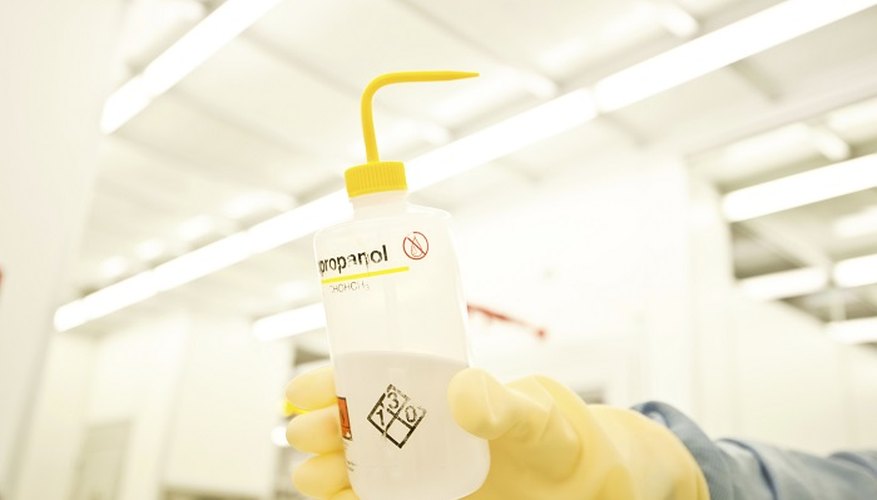Polyester resin is a thick fibreglass liquid that becomes solid when mixed with 2 per cent catalyst. Polyester resin will bond to almost any surface including metal, wood, foam, plastic and ceramics. When used on porous materials like wood, the resin will not penetrate the wood and form a strong bond unless it's thinned out. Polyester resin also is used for gel coat, which is fibreglass paint that has to be thinned for spray application. You can thin polyester resin but use no more than 10 per cent acetone or the fibreglass won't harden properly.
- Polyester resin is a thick fibreglass liquid that becomes solid when mixed with 2 per cent catalyst.
- Polyester resin also is used for gel coat, which is fibreglass paint that has to be thinned for spray application.
Put on a respirator and a pair of rubber gloves. Fill a small bucket three-quarters of the way full with polyester resin using a measuring cup. Keep track of the amount of resin you poured into the bucket.
Add 10 per cent acetone to the resin or 10 parts resin to one part acetone. Thoroughly stir the acetone into the resin until it completely mixes together.
Add the 2 per cent catalyst to the bucket of thinned resin and thoroughly stir it together with a stick. The fibreglass will harden around 30 minutes after the catalyst is added.
Apply the resin to the surface of the wood or other porous material using a felt roller. Roll the resin on as evenly as possible in a heavy coat and let the resin harden.
WARNING
Wear rubber gloves when handling catalysed resin to avoid chemical burns.
